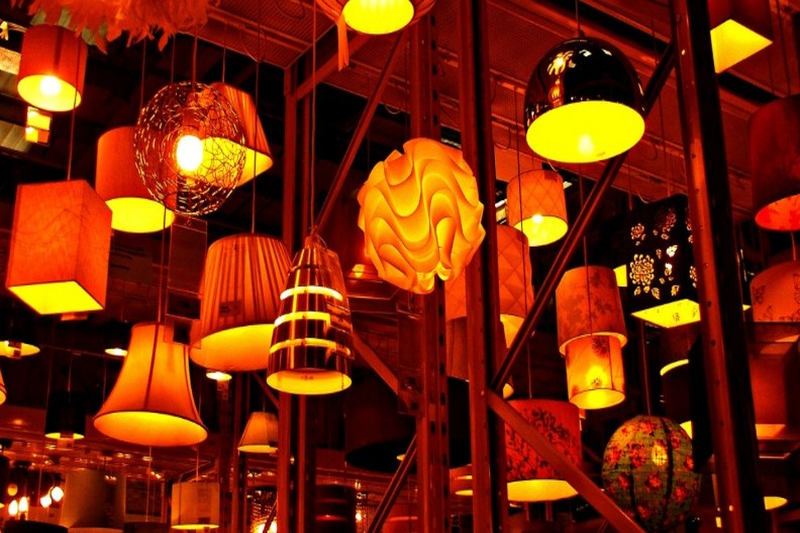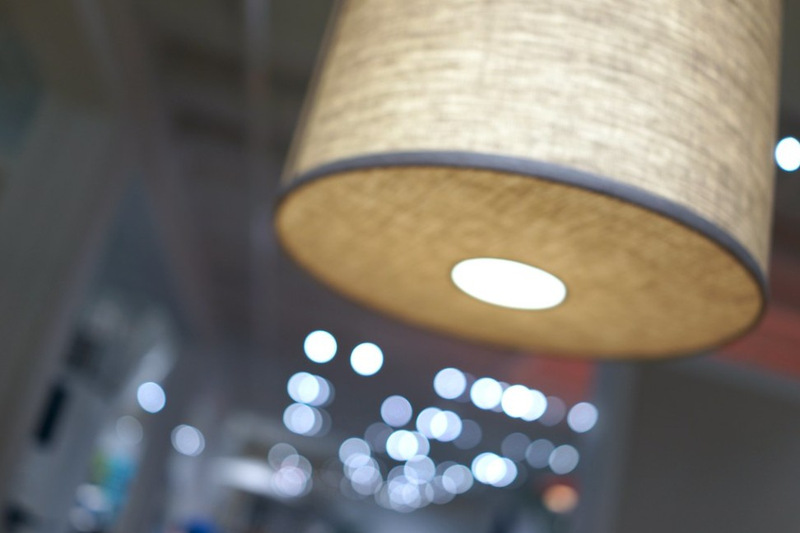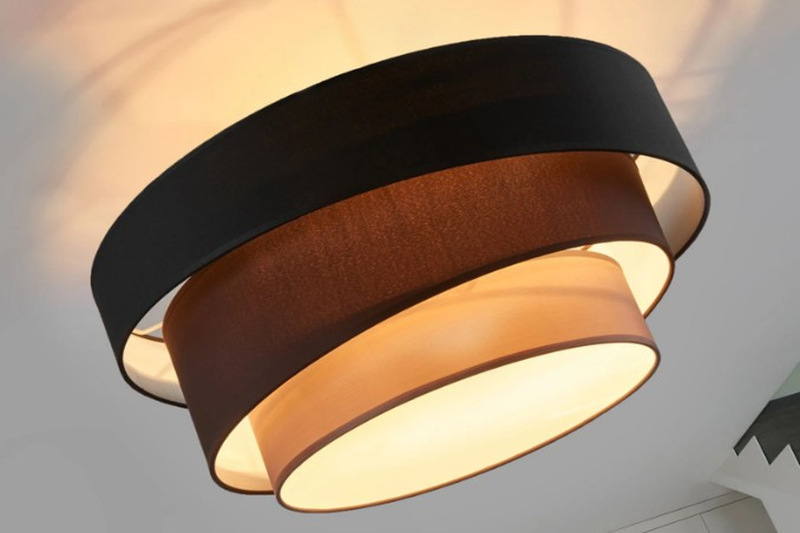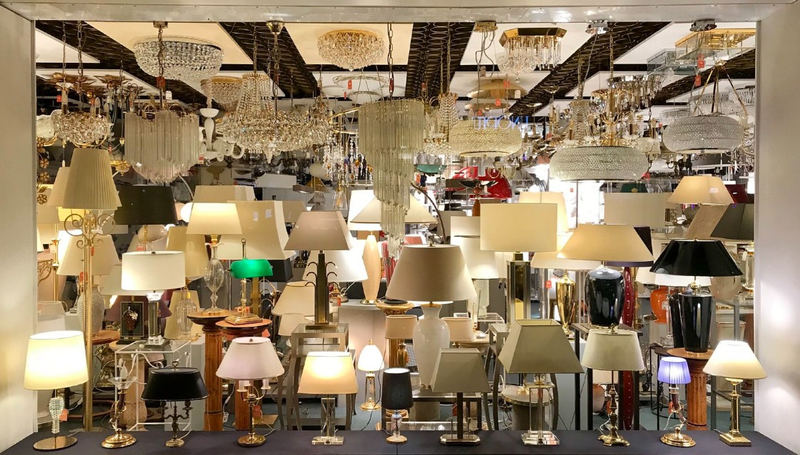
Alright, I don’t know who needs to hear this, but loads of you are making terrible choices when hanging lampshades in your houses, and it’s driving me quietly crazy.
I’m sorry, I don’t mean to judge, but I have been biting my tongue for long enough. We need to talk about lampshades.
To be clear, this isn’t about style or taste, it’s about choosing the right type of lampshade for your room. You know, the one that gives the desired effect for the environment you are trying to create. These things aren’t just decorative, they are specifically designed to distribute light in different ways and control the lighting in each room. Getting it wrong can make a nice big room feel like a cupboard, or a cosy book nook feel like a hospital waiting area.
I don’t usually write guides on here, but I genuinely think this could help, so I’m going to break with convention and write a guide on how to choose the right lampshade for your space. I’ll cover all of the main types of lampshade, what they are designed for, and how they are best used without making your lovely lounge look like an interrogation room.
(I hope my mother in law reads this. She doesn’t know about my blog and my other half refuses to talk to her about it, no matter how much I pester him 😂)
The Drum Shade

These a big, bold, and modern. They look just how you would expect from the name, like drums. Cylinder shaped things.
Anyway, they are very popular and for good reason. Drum shades are brilliant for providing even, soft lighting across the whole room. The fact they are made of fabric and are quite wide means they diffuse the glare of the bulb equally distribute the light.
It’s hard to go wrong with a drum shade, so if you’re ever in doubt one of these is probably going to work just fine. That said, they are probably best for:
- Living rooms where you want cosy, rather than cave like
- Bedrooms, especially if you want a boutique hotel feel
- Dining rooms if hung lower and over a dining table
Best avoided if you have low ceilings as their size and the fact they hang down quite far can make the room feel smaller. Plus, no one wants to play a game of ‘try not to knock yourself out on the lampshade’ every time they stand up.
The Empire Shade
Like a drum shade, but cone shaped. Thinner at the top and wider at the bottom. Like a skirt.
Empire shades are good for directing light downwards and still letting a little out of the top, so they brighten a space without blasting light absolutely everywhere.
Some people might think they are a bit dated, but the Empire shade still has its place. I would say they are best for:
- Smaller rooms like studies, or hallways. Anywhere you want functional but warm light.
- Spaces with low ceilings. The tapered shape makes them feel less dominant than drum shades.
They aren’t great for bigger rooms unless you are pairing them with wall lights or something. They can end up looking a bit lost on their own in larger spaces.
The Globe Shade

Big round shades that cover the whole bulb. They are perfect spheres and will glow like the moon if you pick the wrong style.
Find a good one though, and globe shades are great for scattering light in every direction, so if you need a space to feel light, airy, and bright, this is the type of lampshade you need.
You can get nice globe shades but the most famous type is that awful paper one that costs about £2. You see them in rental houses and student accommodation all the time. Avoid this style of globe shade like the plague, but if you’re looking at a more stylish version then they are best used for:
- Kitchens, if you are planning on hanging a few in a row above an island.
- Bathrooms. People always go for spotlights in bathrooms, but be more interesting. Just check the shade you choose is resistant to damp.
- Minimalist or ultra modern interiors. They are timeless and highlight sparsity, which is what you’re going for with minimalist styles.
They aren’t great for bedrooms though, or any space where you want to create a warm, cosy atmosphere. Even with a warmer bulb, they can make spaces feel stark.
The Pendant Shade
The Pendant shade is more of a category than one specific style, because you can get all kinds of different pendant lampshades. Seriously, there are thousands of them, from industrial meal domes to delicate glass cones.
They all hang down rom the ceiling on a chord though (usually need an electrician to fit as it’s a whole new pendant, not just a shade), and are excellent for focussing light on a target area where it is needed. They direct the light downwards in a concentrated area, so you could think of them as task lights.
This is why they are most beneficial when used:
- Above dining tables. This is a classic use for pendant shades, either a single shade or a collection of smaller ones together.
- Kitchen counters, again, great when used in groups of 3.
- Hallways and stairwell, because they are quite striking and work as a feature as well as lighting those tight spaces.
However, beware of using them in spaces that are especially small or likely to be cluttered. Pendant shades hanging down in a small kitchen will just get in the way and make it look even smaller. Not the best in darker spaces either, unless moody is what you ae after.
The Tiered Shade

There can be some crossover with tiered shades and drum shades these days, but true tiered shades are known for creating a softer glow than standard drum shades, and often create interesting shadows too.
If you are struggling to imagine one, think fabric ruffles, glass cascades, and modern geometric stacks. They are all about layers and texture, so anything you’ve seen that is a bit most out there was probably a tiered shade.
Best used for:
- Living rooms if you want softer light as well as a talking point.
- Bedrooms, since they tend to give off quite a calming light.
- Any room that needs some added character.
That said, they don’t mix well with minimalist or stripped back interiors. Your aunt Jodie probably has a tiered shade.
The Chandelier
A classic, and not necessarily a relic of the 1980s either, when people tried to make the living room of their 3 bed semi look like a period drama mansion.
Chandeliers actually come in all sorts of shapes and sizes, from the massive Downton Abbey type to sleek glass drops and even some wooden variations. They throw light all over the place and add a bit of glamour too. A small chandelier in the right space can work surprisingly well, although I can’t imagine many people live in a house that could take one of the old crystal ones.
They work best in:
- Large dining rooms where the dinner table is often used for social gatherings.
- Very big hallways or entrances where the ceiling can take the visual weight.
- Bedrooms, funnily enough. Although you need to have the right style in their already to support one, and an alternative wall light on bedside lamp for winding down in the evening.
Chandeliers aren’t exactly subtle, so you have to be realistic about using them. They will quickly dwarf a space that is too small and look daft if they don’t match the style of the house too.
Picking the Right Shade for Your Space

Now you know a bit about each type of lampshade, let me help you actually choose which one to go for. There is no hard and fast rule, and multiple options might work just as well in the same space, but these tips should help.
Size Matters
Size is one of the three pillars of choosing a lightshade. A lampshade that’s too small will look lost in a big room, while one that’s too big will dominate and make the ceiling feel lower. As a general guide, go for about 5–7cm of shade diameter per metre of room width. So, for a 3-metre wide room, a 30–40cm diameter shade works well.
Mood and Material
Another of the three pillars is the mood you want, and the material of the lampshade is just as important here as the type. If you want a cozy little nest to retreat to, fabric and (good quality) paper shades will give you that. If you want lots of bright clear light to open a space up, glass globes are a good option.
Interior Style
Pillar number three is style. The shade obviously needs to match the style of the rest of your room and, ideally, your house. A period house will better support a chandelier than a 1990s newbuild, for example. Equally, some styles, like industrial pendants, work better in a kitchen than in a cosy country living room.
Layer Your Lighting
I’ve just been talking about ceiling shades, but you don’t stop there. Mix them with floor lamps, table lamps, wall lamps – whatever you need to get the desired effect. This is actually a great way to help break up rooms into different areas, too. It makes your spaces flexible so they can have different vibes depending on how they are being used.
The Bulb!
Don’t get this bit wrong. The wrong bulb in the right lampshade will still look pants. Warm white is best for living rooms and bedrooms, but you can try something cooler in kitchens and bathrooms. Check the wattage too, because overly bright bulbs can overpower your room. Oh, and walk past anything that is tinged with blue or red or whatever else – unless you want your house to look like a budget supermarket.
Lights Out
So that’s it from me. My slightly patronising guide on how to pick the right lampshade for your space is finished. I hope it has been useful. Especially if you are the lady 6 doors down from me who has actual strip lighting in her living room 🤮
Just remember that lighting sets the mood in your house, so getting it right will immediately make your house feel more homely, more balanced, and more stylish. Yes, your lampshade needs to look amazing, but it also needs to be the right mazing lampshade for the room you want to put it in.
It’s not as if there aren’t enough designs out there to choose from, so have a think, then go out and have fun shopping for something perfect. Lights out from me!
